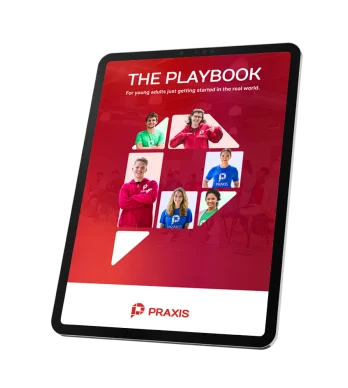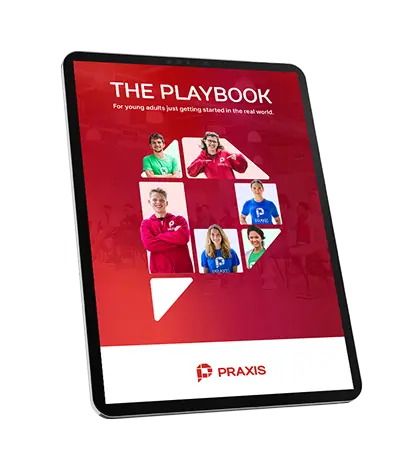- Home >
- Resources >
- 5 Mental Models That Will Get You Promoted Early In Your Career
We live in an increasingly complex world. If you want to learn how to navigate it effectively, then you need to develop (or learn) mental models.
A mental model is “an internal representation of external reality.” You might think of it as a rule of thumb on steroids.
I like think about mental models as frameworks for making decisions. Often, decisions can be hard because you must navigate a ton of complex information.
Maybe you’re trying to choose between two options. Maybe you’re evaluating a new opportunity. Maybe you’re trying to prioritize your time or money.
Mental models can help tame the chaos by providing a framework to map your unique decision onto — in this way, mental models can help you process you decision through a pre-existing template.
Learning to understand and leverage mental models is basically like having a cheat code.
There are countless mental models worth mastering. (If you really want to go deep on mental models, check out the late Charlie Munger’s work. I recommend the Poor Charlie’s Almanac or “Seeking Wisdom” by Peter Bevelin.)
For now, I’ll share five of my favorite mental models.

Five Mental Models Every Young Professional Should Master
- The Pareto Principle (Or, The 80/20 Rule)
- First Principles Thinking
- Compound Interest
- Occam’s Razor
- The Theory of Constraints
Below, I’ll outline each model and how you can apply it.
Pareto Principle (80/20 Rule)
The Pareto Principle, commonly known as the 80/20 Rule, posits that 80% of outcomes often come from 20% of causes. In a professional context, a majority of results are typically generated by a relatively small portion of actions or inputs.
Application: As a young professional, applying the Pareto Principle involves identifying and focusing on the most effective 20% of your tasks that contribute to the majority of your success. This focus can make you more efficient, better at managing your time, and overall, more effective.
First Principles Thinking
First Principles Thinking is a method of problem-solving that involves breaking down complex problems into their most basic, foundational elements, and then reassembling them from the ground up. This approach encourages deep understanding and innovative solutions, as it avoids assumptions based on existing beliefs or methods.
Application: In your career, you can apply First Principles Thinking to find unique solutions to tough problems — or situations where there’s no clear right answer. Stripping a problem down to its component parts can help you better diagnose issues, and as a result, better formulate solutions. If you’re ever stuck wondering why something isn’t working (or unsure how it works in the first place), boil it down to its basic parts.
Compound Interest Model
Compound interest is well-known in finance, but it also applies to personal and professional development. It suggests that small, consistent efforts accumulate over time, leading to significant results. Just like financial compound interest, skills, knowledge, and professional networks grow exponentially over time with regular investment.
Application: As a young professional, understanding compound interest means recognizing the value of gradual, incremental improvement over time. Regularly investing in skills, building relationships, and accumulating experiences can lead to substantial career growth over time.
Occam’s Razor
Occam’s Razor is a principle that suggests the simplest explanation is usually the correct one. In decision-making and problem-solving, it implies that “one should not make more assumptions than necessary.” It encourages simplicity and cutting through unnecessary complexity.
Application: You can apply Occam’s Razor to streamline decision-making and problem-solving processes. By focusing on simplicity and avoiding over-complication, you can make more effective decisions faster, a crucial skill in the fast-paced professional world.
Theory of Constraints
The Theory of Constraints is a mental model aimed at helping you identify the most significant limiting factor (constraint) in achieving a goal, and systematically improving that constraint until it is no longer the limiting factor. In business and personal productivity, this model helps in focusing efforts on the most impactful areas.
Application: By applying the Theory of Constraints, you can identify bottlenecks or barriers in their projects or career paths. By addressing these constraints, you can significantly improve your performance and productivity, leading to better outcomes and career progression. Often, elimination rather than addition is the way to improve (for example, sometimes eliminating one bad habit is more valuable than adding a new positive habit).
Anyway, those are a few of my favorite mental models. There are countless more that can help you navigate through the challenges of your life and career. But these offer a great starting point.
Take them for a test drive. Then share this article with a friend if you found it useful.
Share Post
Praxis






